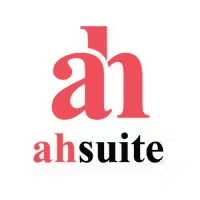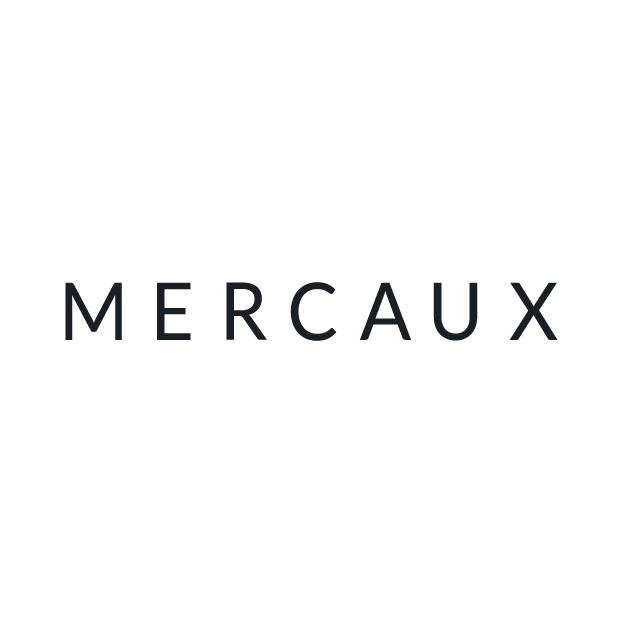Description

Ahsuite

Moxo
Comprehensive Overview: Ahsuite vs Moxo
As of my last update, Ahsuite and Moxo are platforms that serve different aspects of business and communication needs, primarily focusing on project management, client communication, and collaboration. Here's a detailed overview:
Ahsuite
a) Primary Functions and Target Markets
- Primary Functions: Ahsuite is a client portal and communication platform designed to help agencies, consultants, and freelancers manage client interactions. It offers features such as secure document sharing, task management, and client messaging. Its intuitive interface is aimed at streamlining client communication by providing a central space for all interactions.
- Target Markets: The primary target markets for Ahsuite include digital marketing agencies, creative professionals, consultants, and freelancers who require an efficient way to manage client communications and project collaboration.
b) Market Share and User Base
- As a relatively niche product, Ahsuite might not have a large market share compared to major project management tools but is steadily growing within its specific target market of small to medium-sized agencies and independent professionals looking for specialized client management solutions.
c) Key Differentiating Factors
- Client-Centric Communication: Its focus on client communication sets it apart from general project management tools. Features tailored specifically for client interaction are Ahsuite’s unique selling point.
- User-Friendly Interface: Designed to be simple for non-technical users, which can be a significant advantage for freelancers and small agencies without dedicated IT teams.
- Secure Document Exchange: Emphasizes security with encrypted document exchanges tailored for sensitive client information.
Moxo
a) Primary Functions and Target Markets
- Primary Functions: Moxo (formerly known as Moxtra) is a client interaction hub that provides an all-in-one suite for managing client communications and workflows. It supports secure messaging, video conferencing, document collaboration, and task management. It integrates with various other platforms to consolidate client interactions into a single tool.
- Target Markets: Moxo targets professional service firms like legal firms, financial advisors, real estate companies, and other organizations that require a secure, integrated platform for managing client communications.
b) Market Share and User Base
- Moxo has a more substantial market presence than Ahsuite due to its versatility and ability to cater to larger enterprises. Its integration capabilities and broad feature set have attracted businesses that need comprehensive client interaction solutions.
c) Key Differentiating Factors
- Comprehensive Communication Hub: Unlike Ahsuite, which is more narrowly focused, Moxo provides a broad range of communication tools in one platform, including video conferencing and collaborative document editing.
- Integration Capabilities: Moxo's ability to integrate with numerous existing business systems and applications enhances its appeal to larger firms looking to unify their communication infrastructure.
- Security and Compliance: Emphasizes security and compliance, a critical requirement for professional service firms handling sensitive client data, with features like audit trails and secure data storage.
Comparisons
While both Ahsuite and Moxo serve to enhance client interactions and communication, their approach and target markets differ significantly. Ahsuite is more client-focused and user-friendly, catering to smaller businesses and individual professionals. In contrast, Moxo offers a more extensive feature set and integration capabilities tailored for larger enterprises and organizations in highly regulated industries. As a result, while both may compete in the communication space, they address different needs and client profiles within that space.
Contact Info

Year founded :
2021
Not Available
Not Available
United States
http://www.linkedin.com/company/ahsuite

Year founded :
2016
Not Available
Not Available
Brazil
http://www.linkedin.com/company/moxo
Feature Similarity Breakdown: Ahsuite, Moxo
When comparing products like Ahsuite and Moxo, which are both platforms designed to enhance organizational efficiency and collaboration, it's important to look at several aspects to truly understand their similarities and differences. Below is a feature similarity breakdown based on the typical functionalities of such platforms:
a) Core Features in Common
-
Collaboration Tools: Both Ahsuite and Moxo offer tools that facilitate team collaboration. This includes chat functionalities, group discussions, or project-based communication threads.
-
Project Management: These platforms usually have features to create and manage tasks, track project progress, set deadlines, and assign responsibilities.
-
File Sharing and Storage: Both platforms support the sharing of files among users and offer secure, centralized storage solutions.
-
Integration Capabilities: Ahsuite and Moxo typically provide integrations with popular third-party applications and services like Google Workspace, calendars, or cloud storage services to enhance productivity.
-
User Management: They have administrative features for adding or removing users, assigning roles, and managing permissions.
b) User Interface Comparison
-
Ahsuite: Known for its straightforward and user-friendly interface, Ahsuite often emphasizes simplicity. The design might be more linear and minimal, focusing on easy navigation and quick access to core functionalities.
-
Moxo: Often offers a more dynamic UI that integrates real-time collaboration elements prominently. It might appear more complex due to its robust feature set, emphasizing visual elements like dashboards and real-time communication channels. Moxo’s UI could be more suitable for organizations that require a more integrated communication solution.
c) Unique Features
-
Ahsuite:
- Simplified Client Access: Ahsuite is particularly advantageous for environments requiring frequent client interactions, offering guest or client portals that allow users to manage client communications seamlessly.
- Ease of Use: Its simple setup and intuitive design are often highlighted as strengths, making it ideal for smaller teams or users who need quick deployment without a steep learning curve.
-
Moxo:
- Omnichannel Client Interaction: Moxo is designed with a strong focus on client interactions across various channels, integrating video communication, chat, and task management seamlessly.
- Workflow Automation: Moxo often supports automated workflows, which help streamline processes like client onboarding or project approvals.
- Extensive Security Features: Geared for environments with heightened security needs, it might include advanced security protocols and compliance features suitable for industries such as finance or healthcare.
In conclusion, while Ahsuite and Moxo share numerous core functionalities focused on collaboration and efficiency, they cater to slightly different use cases, with Ahsuite potentially being more client-communication-centric, whereas Moxo might appeal to organizations needing a comprehensive, all-in-one platform for both internal and client-facing operations. The unique features and user interface approaches reflect these different focal points.
Features

Not Available

Not Available
Best Fit Use Cases: Ahsuite, Moxo
Ahsuite and Moxo are both digital solutions tailored to enhance productivity and collaboration, but they cater to different needs and use cases. Here's a breakdown for each:
a) Ahsuite
Best Fit Use Cases:
- Consultancies and Agencies: Ahsuite is an ideal choice for small to medium-sized consultancies and agencies that require a streamlined project management tool to handle multiple client accounts. Its features often include task management, client portal functionalities, and collaboration tools.
- Freelancers and Independent Contractors: The platform is well-suited for freelancers who need to manage projects independently while keeping track of communications and deliverables with clients.
- Teams Needing Customization: Ahsuite often provides customizable dashboards and workspaces, making it appealing for teams that want to tailor their project management environment to their specific workflow needs.
Industry Vertical and Company Size:
- Ahsuite caters primarily to the creative, marketing, and consulting sectors. Its features are aligned with businesses that frequently engage with external clients and require seamless communication and file sharing.
- It is usually tailored towards small to medium-sized enterprises (SMEs) due to its affordability and feature set that aligns with the needs of these businesses.
b) Moxo
Preferred Scenarios:
- Client-Facing Operations: Moxo excels in scenarios where businesses need to offer a comprehensive client interaction and service delivery platform. It is especially beneficial to industries that require secure document exchange, real-time collaboration, and lifecycle management.
- Financial Services and Legal Firms: These sectors benefit from Moxo's robust security features for handling sensitive data and its workflow automation capabilities that streamline case management and client interactions.
- Healthcare Providers: The platform can be leveraged for securely managing patient interactions, appointments, and records while ensuring regulatory compliance.
Industry Vertical and Company Size:
- Moxo often targets industries with high compliance and data security needs, such as financial services, legal, and healthcare.
- The platform can cater to both SMEs and larger enterprises due to its scalability and comprehensive suite of tools that support complex client workflows.
Catering to Different Industries and Company Sizes:
- Ahsuite focuses more on flexibility and tailored client interactions, making it a great choice for businesses with more dynamic and creative workflows that require less rigid security but more flexibility in client engagement.
- Moxo is designed for industries where data security, structured client communications, and service efficiency are paramount. It supports enterprises that require robust compliance measures and complex process management.
Both platforms offer unique features that align with the specific needs of varying business models, ensuring that organizations can choose the solution that best fits their operational and client engagement requirements.
Pricing

Pricing Not Available

Pricing Not Available
Metrics History
Metrics History
Comparing teamSize across companies
Conclusion & Final Verdict: Ahsuite vs Moxo
To provide a comprehensive conclusion and final verdict for Ahsuite and Moxo, let's analyze each of the required aspects:
a) Which Product Offers the Best Overall Value?
Determining the best overall value between Ahsuite and Moxo depends on specific user needs and contexts, such as the type of industry, team size, and budget. However, based on general criteria:
-
Ahsuite is often geared towards freelancers, small businesses, or teams that need a cost-effective, straightforward solution with essential collaboration features. Its competitive pricing and basic functionality make it a good value for smaller operations.
-
Moxo typically offers a broader range of features suitable for larger businesses or teams with more complex needs. Its ability to integrate with other systems and provide comprehensive client interaction and project management tools might justify the higher price point for businesses that require such advanced capabilities.
Based on versatility and feature richness, Moxo might offer the best overall value for medium to large organizations, while Ahsuite provides excellent value for smaller teams or individuals.
b) Pros and Cons of Choosing Each Product
Ahsuite:
- Pros:
- Affordable pricing, making it budget-friendly for freelancers and small businesses.
- User-friendly interface with essential features for communication and task management.
- Quick and easy setup without complex configurations.
- Cons:
- Limited advanced features and scalability might restrict use for larger organizations.
- Fewer integrations and customizations compared to more robust platforms.
- Could lack industry-specific solutions or specialized support.
Moxo:
- Pros:
- Comprehensive feature set that supports extensive project management and client interaction.
- High scalability and flexibility for growing businesses.
- Strong integration capabilities with other enterprise tools and platforms.
- Cons:
- Higher cost, which may not be justified for smaller teams or simple projects.
- More complex interface that might require a learning curve for new users.
- Potential overkill for teams with basic collaboration needs.
c) Recommendations for Users Deciding Between Ahsuite and Moxo
-
Evaluate Needs and Budget: Understand the scale and complexity of your projects. If you're a freelancer or small business, Ahsuite might be suitable due to its simplicity and cost-effectiveness. Larger organizations or those needing advanced features should consider Moxo.
-
Trial Periods: Utilize free trials or demos to evaluate which tool aligns better with your workflow and team dynamics.
-
Scalability Concerns: If you anticipate fast growth or more dynamic project requirements, Moxo may be the preferable choice given its ability to scale and adapt.
-
Specific Use Cases: Consider if your industry requires particular features or integrations available only in one platform.
Ultimately, the decision should hinge on the specific functional needs and financial capacity of the user, as well as long-term growth projections.
Add to compare
Add similar companies




